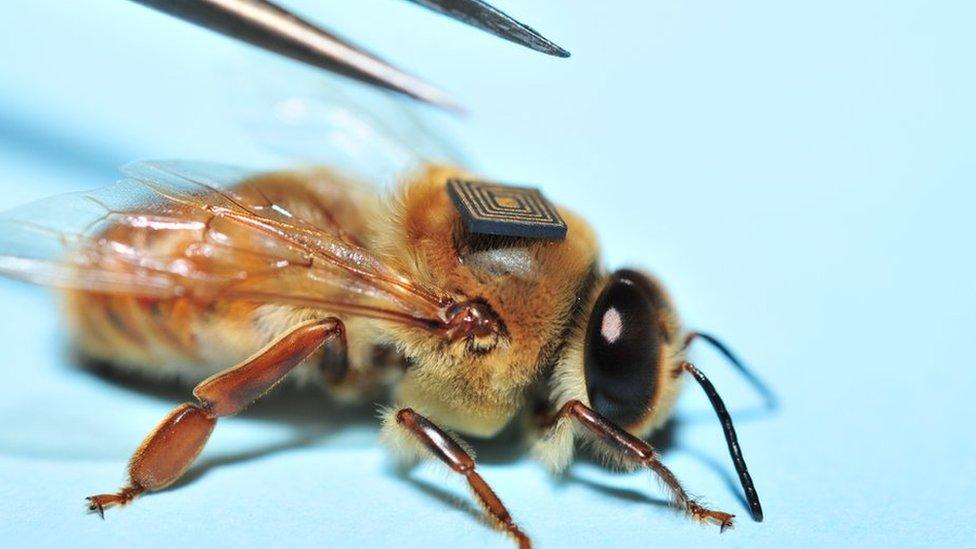Bees tracked with tiny radar chips and drones
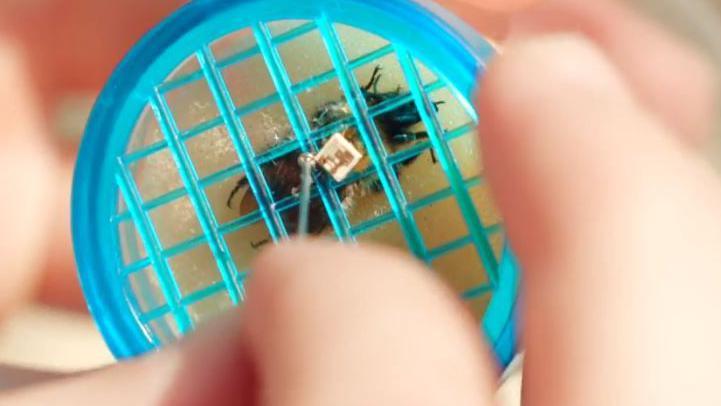
Tags are attached to the back of the bee in between its wings "like a rucksack"
- Published
Tiny radar chips are being fitted to bees to track their movements.
A team at The University of Oxford have been investigating how to help declining insect and bird populations.
The new Biotracks technology tracks the harmonic radar tags attached to bees with a receiver carried on a drone in a bid to improve understanding of what is happening to pollinators.
Team leader Dr Tonya Lander, from the university's department of biology, said they are hoping to share the equipment with other researchers.
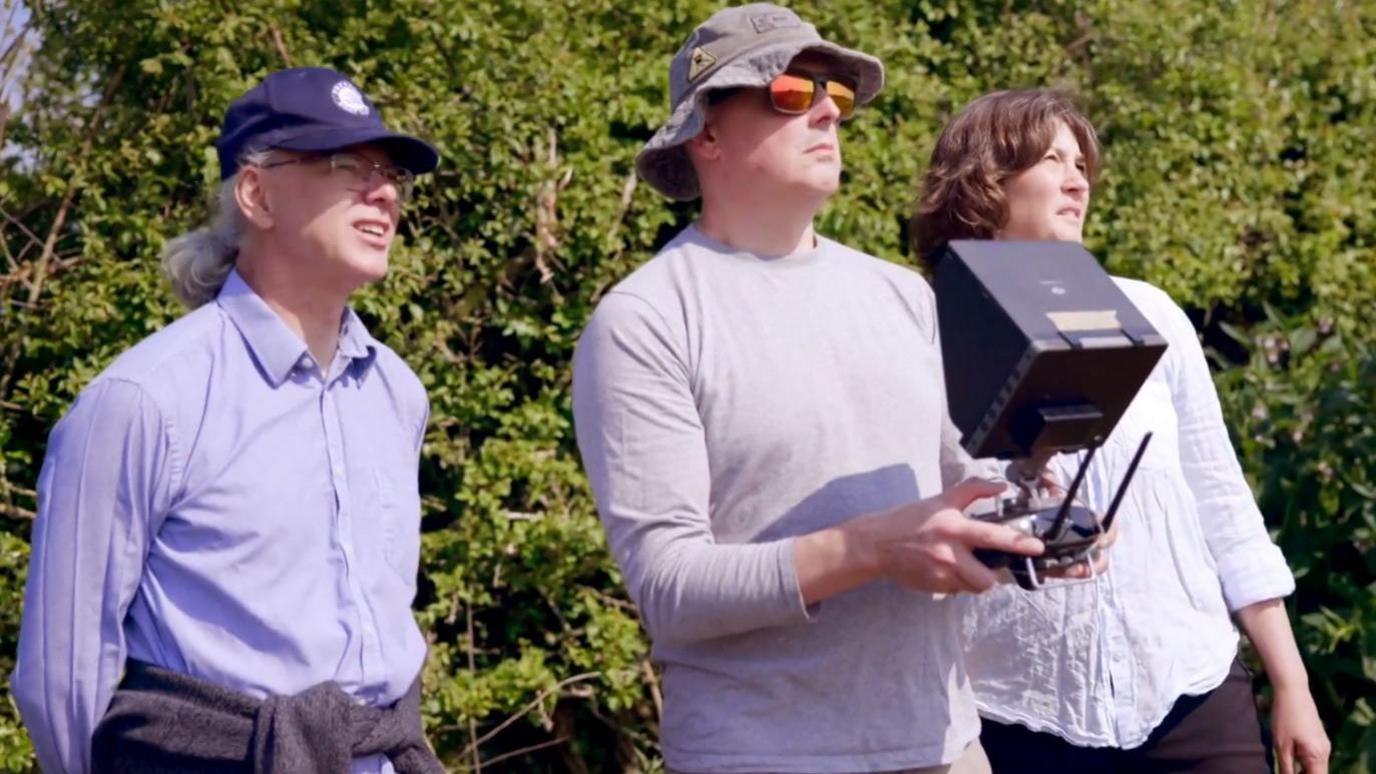
Dr Lander (right) and Prof Chris Stevens (left) have been investigating ways to solve the problem of declining insect and bird populations
It has been found that more than 85% of plant species are insect pollinated but 40% of insect species are at risk of extinction, external.
"That means if they don't receive pollination, they'll set fewer or possibly no seeds, which means no fruit for us to eat but also no reproduction of those plants for the next generations," Dr Lander said.
In a video for the university's website, the team said there was an "urgent" need to locate insects, monitor behaviour, follow local movements and track swarm migration.
"We have a radar transmitter sitting on the ground, a small tag attached to the back of the bee in between where the wings attach like a little rucksack and a receiver that's carried on a drone flying up above," Dr Lander explained.
Speaking to BBC Radio Oxford, she said they "ended up inventing the smallest harmonic radar tag ever" so that the insects could carry it without affecting their behaviour.
Other challenges included the amount of weight and the kind of equipment that could be safely carried on the drone.
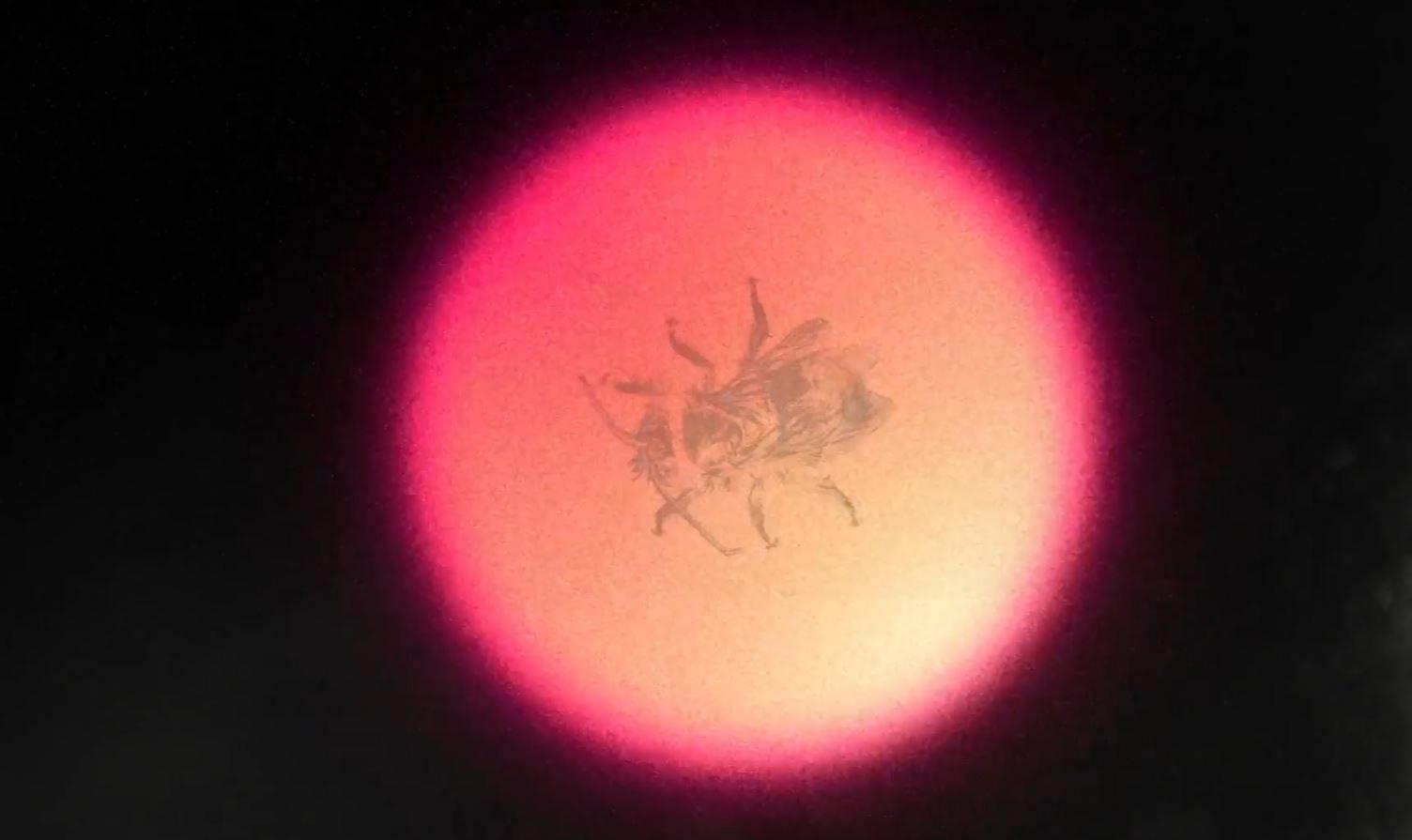
LED lights around their camera reflect off the tag on the bee and backwards to the camera
A small circuit attached to the radar system converts signals into a higher frequency, which is then picked up "with a very sensitive receiver".
"It illuminates the bee, then pings back a higher frequency signal, which we can locate with another radio receiver," said Associate Prof of Engineering Science Chris Stevens.
Prof Stevens described tracking small insects with radar as an "engineer's extreme sport".
"Because it was so difficult. Biotrackers have been able to make it a working technology, a real technology that we can use today," he said.
He said its benefit was that the tracking range could be extended from a few metres "to potentially an entire field".
Dr Lander said the team had just put the technology in action but had not yet "moved to the stage of actually doing the biology".
"Great things to come but we're at that transition point now," she said.
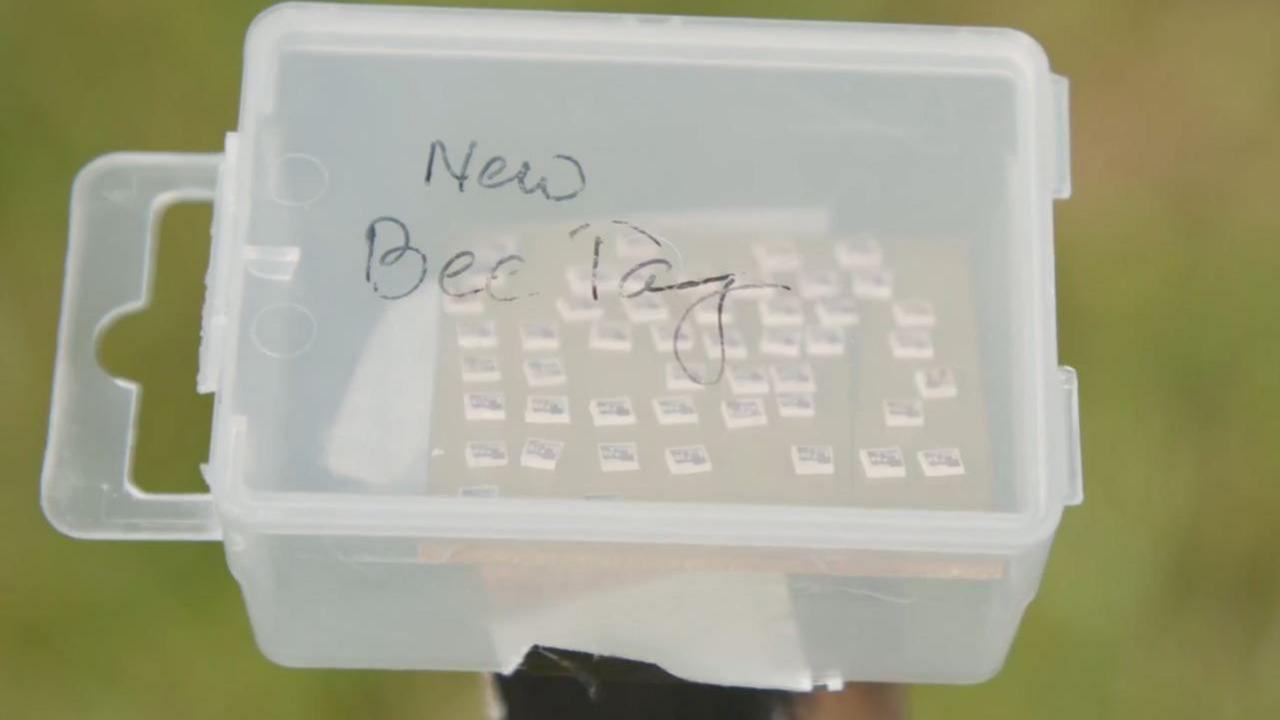
Dr Lander said her team invented the tags that can be carried by a bee
Get in touch
Do you have a story BBC Oxfordshire should cover?
You can follow BBC Oxfordshire on Facebook, external, X (Twitter), external, or Instagram, external.
Related topics
- Published30 March 2021
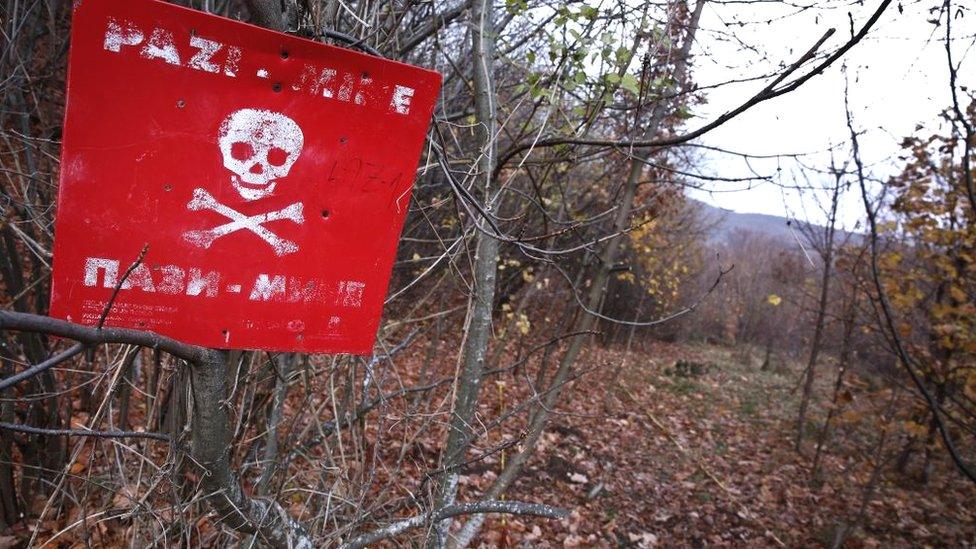
- Published21 August 2022
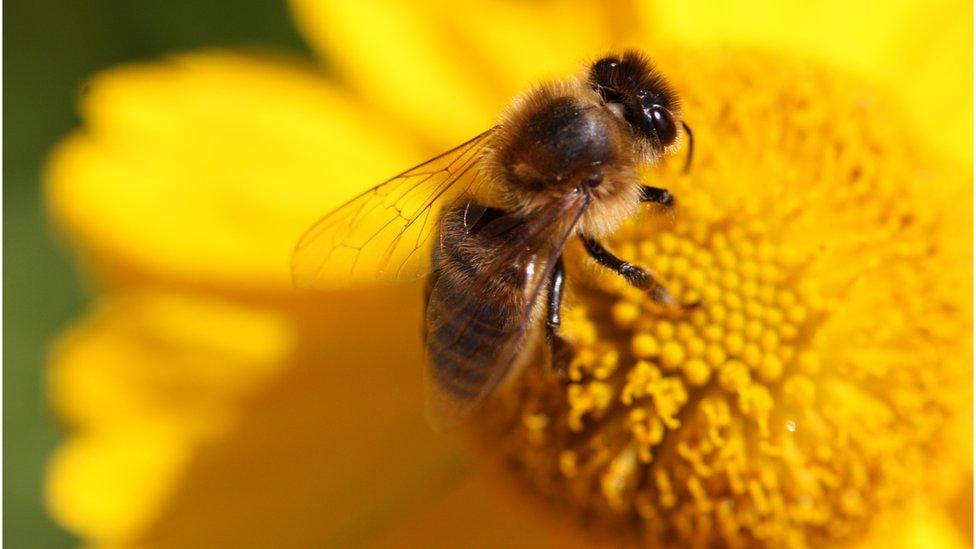
- Published25 August 2015
